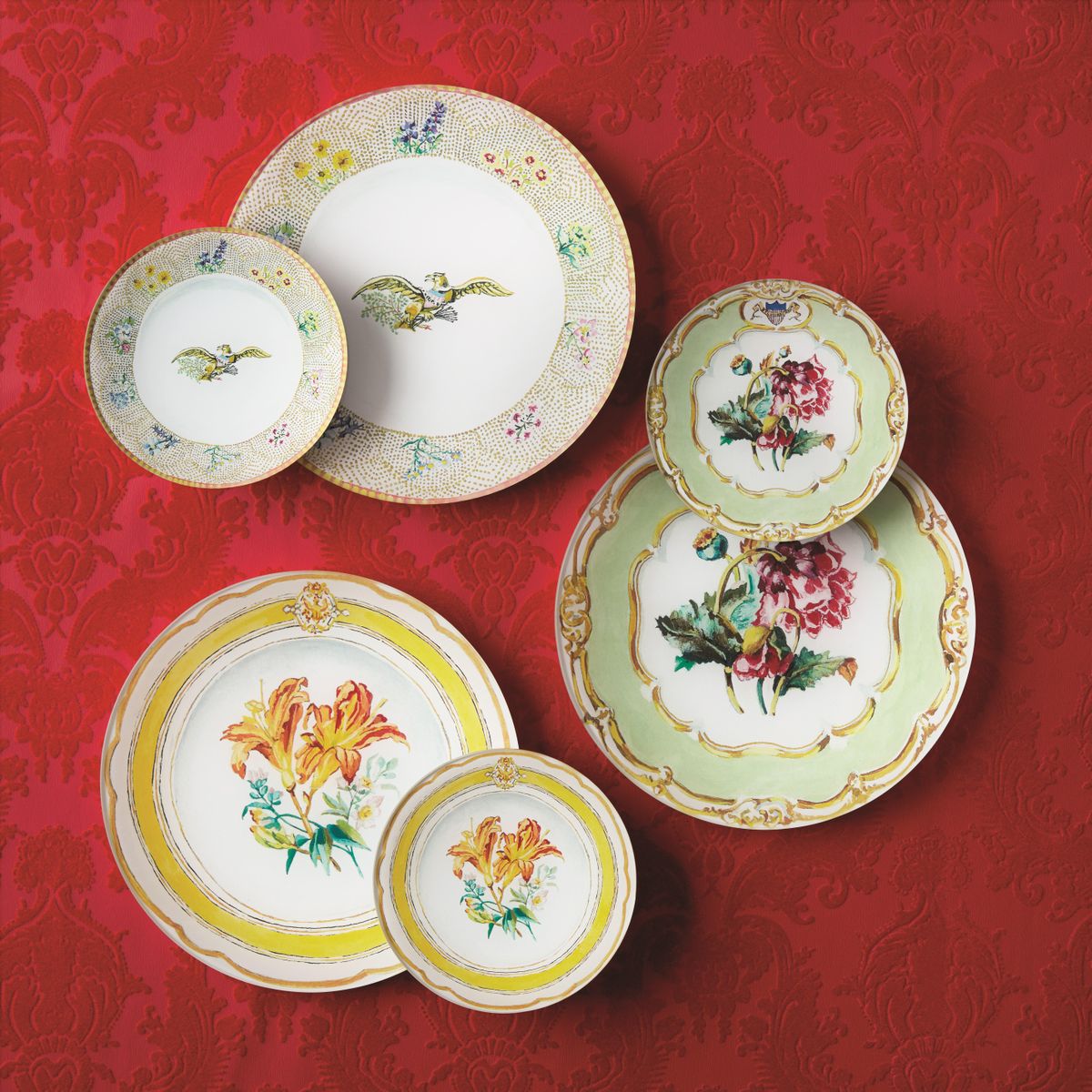Dishing up politics: Collection brings china from the White House to your house

You can’t buy the official White House china patterns that presidential families use to entertain. But a new line of glass decoupage plates by designer John Derian and artist Katharine Barnwell feature patterns taken from six presidential administrations.
The line was just introduced by the White House Historical Association and features interpretations of presidential dining services from the Johnson, Polk, Lincoln, Grant, Reagan and Truman eras.
“People all over the world have always had a fascination with the White House and the presidents who occupy it,” says Gina Sherman, vice president of retail strategy and sales for thehistorical association, a nonprofit that supports additions to and restoration of White House furnishings and promotes appreciation of its past. “The China Room at the White House has always been a favorite of mine. I really wanted to share that experience. Every pattern conveys a wonderful historic story.”
Throughout the years, many presidential administrations have ordered special china services that are used for state dinners and other events at the White House. These dishes become part of the White House collection and can be used by later administrations. Sherman wanted to create a line of plates that could serve as decorative accessories, based on some of the most iconic patterns. “I selected six patterns; three from Democrats and three from Republicans,” Sherman says. “There are three floral patterns and three patriotic patterns.”
A collaboration between Derian and Barnwell was forged. Barnwell, a New York-based artist known for her murals and designs in paper for Caspari, painted the White House china patterns in watercolors. “I have always loved beautiful porcelain and was fascinated to paint the plates and then have John Derian take them to a whole different dimension,” Barnwell says.
Derian, who has shops in New York’s East Village and Greenwich Village and a seasonal shop in Provincetown, is known for his distinctive style of decoupage trays, platters and paperweights whose motifs are often based on old botanical prints or historical etchings. He reprinted Barnwell’s images in light-safe ink on acid-free paper, cut them out and glued them to clear glass plates, giving them a couple of coats of varnish. His design for the plates is re-created by artisans at his New York studio.
“I love the idea of a plate that looks like a plate but is not a plate,” Derian says.
These plates are primarily decorative and not microwave- or dishwasher-safe, and they cannot be immersed in water. Derian suggests using them as tabletop trays, cellphone holders or bedside trays. If they are used as chargers or accents on a table, food can be served on them, but they can only be wiped clean, not washed.
The plates have already almost sold out and have been reordered. The Reagan red china has been the most popular so far. The plates are available in 5-inch ($45) and 8-inch ($75) sizes, and come with a description of their presidential history.
The reproduction china is a lot cheaper than the real thing. The Obama china, featuring a band of “Kailua Blue” that represents the waters off the coast of Hawaii, cost $367,258 for 3,520 pieces, paid for with private funds by the White House Historical Association. Although the Obama china was not included in these first adaptations, it and other patterns may be available in the future.